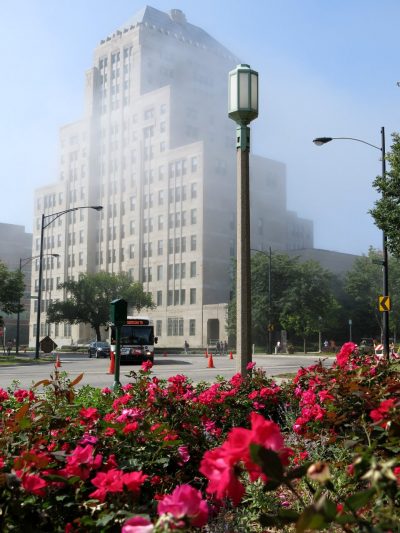Reflections as the Semester Ends

As the spring semester draws to a close this week, I can safely say that I gained a lot from Loyola’s course in Public History and New Media. Although I began the class with some prior experience in both public history and digital media, this was my first sustained opportunity to explore how the two disciplines can support, enrich, and critique one another in combined projects. History’s emphasis on preserving and learning from the past offers a useful counterpoint to the valorization of the “new” in New Media, and vice versa, so that even as digital technologies provide novel ways to give meaning and share access to history, the methods of historians can help to better evaluate and preserve these new media projects.
Among the many helpful readings this semester, Gitelman and Pingree’s New Media: 1740-1915 stood out for providing a historical perspective on new media. The essays in their collection helped show that while new media certainly encourage new ways of seeing and interacting with the world, our own much-hyped mobile world wide web is only the latest iteration in a centuries-long cycle of new inventions. From zograscopes and telegraphs to telephones and cinema, the media landscape has been constantly in flux since well before the digital era. Bryan Alexander’s book The New Digital Storytelling complemented these ideas by showing how digital technologies can utilize time-tested storytelling techniques to create meaningful narratives. As public historians, we can use these insights to approach the media innovations of today and tomorrow as new tools in an ever-shifting storytelling repertoire rather than as exaggerated panaceas or existential threats.
Our class readings and discussions of participatory media were also useful for detailing specific examples and technologies that support the public history concept of “shared authority.” As historians have worked to open opportunities for the public to share in interpreting and authoring history, Web 2.0 has offered many templates for projects where users become authors — whether in crafting personal profiles at a social media site, contributing to a global store of knowledge like Wikipedia, or collaboratively coding open source software at sites such as GitHub. Public Historians can learn from these successful participatory projects to build platforms and exhibits that don’t simply present our ideas to a passive audience, but give users authority to reuse, mix, share, and build upon historical resources while developing their own lasting skills at interpreting and analyzing history. Creating these platforms is no small endeavor, and I’d like to learn more about the usability studies and visitor analytics that can help make these projects useful and track their effectiveness.
Finally, class this semester also helped me build my own practical knowledge and gain experience working with new media tools. While I’ve used Omeka once before for an online collection, the class online exhibit project gave me the opportunity to learn to use plugins like Neatline that add a whole new interactive dimension to Omeka’s exhibits. Guest speaker Adam Strohm’s presentation helped showcase the possibilities of Neatline in IIT’s Building History exhibit while also giving a useful lesson in good metadata practices that are crucial to making a project sustainable and useful into the future. Similarly, speaker Lori Felker‘s introduction to some of the ins and outs of video production and editing was highly informative to me as I’ve done little work on my own involving video. I’m sure these lessons will stick with me and I look forward to working more with public history and new media in the future.